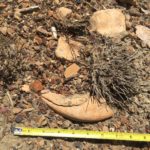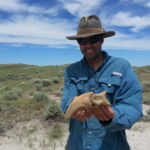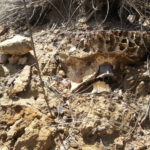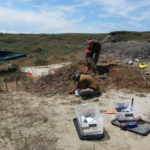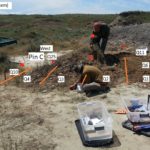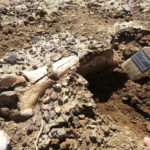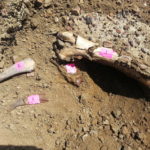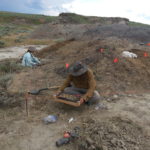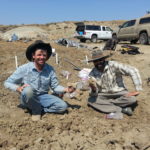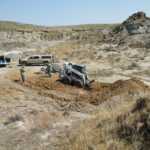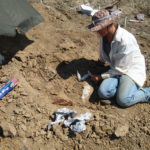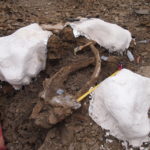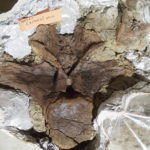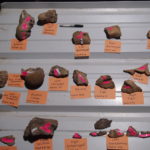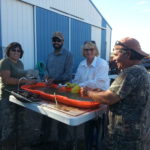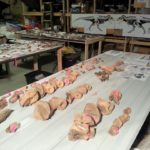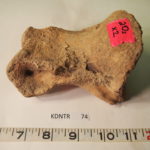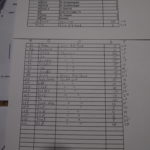Setting up a grid area. Once we knew this site had multiple elements, we started to establish a gridding system. It was fgured that the site would be of considerable size so we developed a quadrant system for excavation. This was due to the fact that elements had been erroded out and reburied. By establishing a quadrant system, it would make assembly easier back at the lab.
Here you can see Nate screening a quadrant. Once we started the site, we realized that probably over 100 years ago, a majority of this specimen eroded out. So even though we were below the main site, as we dug down we started to find fragments. We had to go though each quadrant very carefully in order to collect every piece. At the deepest area, fragments and complete elements were re-burried under 6 feet of sediment.
Cleaning the fragments. Krex was unique in that most of the fragments could be cleaned with water and a tooth brush, they were very stable. All material from each quadrant is kept together and cleaned seperately. Here you can see from left to right ("Diane" Nates mom, Nate, "Lily" Katies mom, and Chris). A great family experience.
Specimen Information
Krex is an associated Tyrannosaurus rex skeleton and skull. It was discovered in the Hell Creek Formation of N.E. Montana in 2018 by Nathan Cooper.
Highlights
- Around a 30% complete specimen based on element representation. There is more work to do on this specimen which should increase the bone count.
- Both skull and skeleton elements are represented. Rare elements include the complete cervical series, furcula, humerus, and nearly complete left foot with claws.
- Though tan in color, the fossil is very stable.
- This will be an outstanding specimen to work into a complete replica for a exhibit.
- Because of its completeness, this specimen will rank among the best ever found in Montana.
Status:
This specimen has been acquired. It is no longer available.
